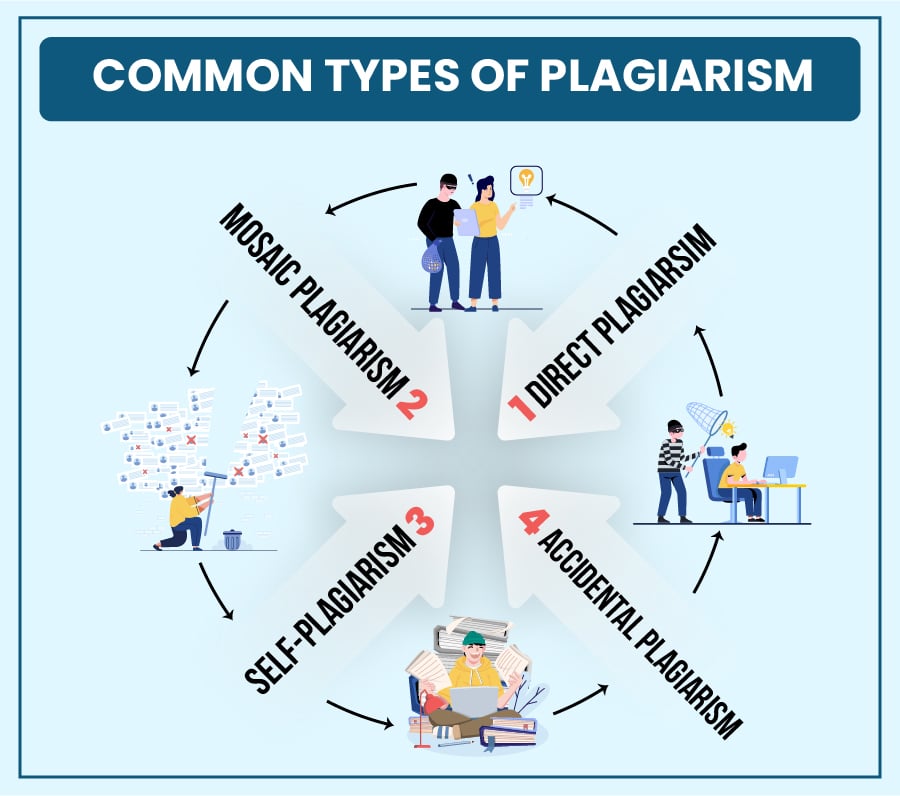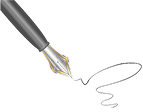How to Avoid Plagiarism in Academic Writing
Learn what plagiarism is and the many techniques that can help you avoid it by reading this blog.
Learn what plagiarism is and the many techniques that can help you avoid it by reading this blog.
Table of Content
What are the Common Types of Plagiarism?
7 Effective Tips to Avoid Plagiarism
What are Some Helpful Tools to Stay Original?
TLDR: To avoid plagiarism, you must acknowledge the work of others by properly citing the sources. But what is plagiarism, why does it matter, and what are its types? Know all this and how to avoid plagiarism by reading the entire blog.
In simple words, plagiarism is when a person uses someone else's ideas without crediting them appropriately. It can either be simple or subtle. Something like copying and pasting text from a source without citation. On the other hand, like paraphrasing ideas without referencing them.
Plagiarism is a grave offence in academics because it decreases the integrity of work and can lead to dire consequences. Moreover, when you plagiarise, not only are you robbing someone's intellectual property, but you're also deceiving your readers and peers.
It's vital to understand what constitutes it and how to avoid plagiarism to maintain academic honesty and integrity.
In academics, there are some common types of plagiarism that you must know about if you want to write a good and distinct write-up. Their respective sections below will describe them in some detail.

Direct plagiarism is when you copy text word-for-word from the authentic source without using quotation marks or giving appropriate credit to the original author.
For Example: If you find a sentence in a book that perfectly fits your paper and you include it without making any changes or citations.
Mosaic plagiarism is also known as patchwriting. It consists of borrowing phrases or sentences from a source and mixing them into your own writing without proper citation.
For Example: Taking a few key phrases from different sources and combining them into a new sentence without attribution is mosaic plagiarism.
Self-plagiarism occurs when you reuse your own previous work without citation.
For Example: If you submit the same paper for two different classes without permission from both instructors, you are committing self-plagiarism. Even though it is your work, it's still dishonest because you are presenting it as new and original.
Accidental plagiarism occurs when you unintentionally fail to cite your sources correctly. This can happen if you forget to include a citation, misquote a source, or paraphrase too closely to the original text.
For Example: If you paraphrase a source but forget to include an in-text citation, that is accidental plagiarism.
These were various types of plagiarism that bother scholars worldwide. To tackle these, our esteemed Assignment Help UK experts have curated a list of tips. They have years of experience in writing and proofreading, so check these tips out in the section below!
Now that we have discussed the many types that occur in academic writing, it is vital to discuss the seven practical tips that will help you in avoiding plagiarism in academic writing! Read their respective sections to know more.
Before starting with the writing process, ensure that you fully understand the source material. Please read it carefully and take notes in your own words. This will help you avoid copying the original text and ensure that you are truly understanding and engaging with the material.
Paraphrasing tools can help you rephrase text while keeping the original meaning intact. One such tool is the Assignment Desk paraphrasing tool, which is designed to help students avoid plagiarism by rephrasing content instantly while maintaining the original meaning. This tool can be handy when you are struggling to paraphrase a complex passage.
When you use someone else's exact words, make sure to put them in quotation marks and include a citation. This applies to both direct quotes and paraphrased information. Follow the citation style guide that your institution recommends. These can include APA, MLA, or Chicago.
These can help you identify any unintentional plagiarism in your work. These tools compare your text against a vast database of sources to check for similarities. Using an authenticity checker can give you peace of mind and help you catch any mistakes before submitting your work. Our website houses our advanced Plagiarism Checker UK tool, which can help students in verifying their content!
When taking notes, make sure to distinguish between your own ideas and information from sources. If you are paraphrasing, mention original sources as citations. On the other hand, if you are directly quoting a statement, use quotation marks. This will help you keep track of your sources and avoid accidental plagiarism.
It might be tempting to copy and paste text from a source, but this is a sure way to commit plagiarism. Instead, read the source, understand it, and then write it in your own words. If you must use the exact words, employ the usage of quotation marks and reference the source.
Different academic disciplines use different citation styles. Read about the different citation styles that your institution or field of study requires. Knowing how to cite sources correctly is crucial for avoiding plagiarism and maintaining academic integrity.
Students often make unintentional errors when trying to avoid plagiarism. Some common mistakes include:
These common mistakes by students can make handling plagiarism a massive chore. What's the solution then? Our expert suggestions! Read about some tools our professionals suggest, which can help you avoid plagiarism and stay original.

Don't Know How to Paraphrase? Don't Stress!
Use our advanced paraphrasing tool free of all costs!
Paraphrase Now!
There are several tools available to help you avoid plagiarism and maintain authenticity in your writing. Some of these include a paraphrasing tool, citation generators, and a plagiarism checker tool. Let's take a look at each of them below:
It is a software that can rewrite or rephrase text without affecting its original intent. In simple terms, it is like a sentence rewriter, presenting the same idea, albeit in different words. It makes use of a massive database of synonyms to restructure sentences and adjust the tone of the text.
Moreover, with how powerful AI has become, it can help enhance content quality while also saving your time. A popular example of such software is our very own Paraphrasing Tool, powered by AI and managed by our experts. Use it and save your efforts!
This type of online program helps create citations for any academic paper by instantaneously formatting source info, whether a book or an article, into a specific citation style, such as APA, MLA or Chicago.
These generators take the burden of formatting from the user, helping them focus on the content of their work. It massively saves time and effort while also improving their content's accuracy and consistency.
It is a computer program that aids in checking instances or occurrences of plagiarism (if any) in a written work by comparing it against a vast database of existing content. These use advanced algorithms to scan a piece of text and compare it against a massive collection of online documents. It aids in avoiding plagiarism in academic writing and identifying the scope of improvement.
Thus, these were some tools that can help you keep your content original and increase your academic integrity.
Summing up, plagiarism is a grave academic issue that must be considered each time you write professionally. In the text above, we saw that there are many types of plagiarism. These range from direct, mosaic, self and accidental. Our pros at Assignment Desk can help make tackling these issues a breeze. Moreover, you can also take note of our various services to learn how to avoid plagiarism in academic writing and write quality content! So, what are you waiting for?
Boost Grades & Leave Stress
Get A+ Within Your Budget!
Use Our FREE TOOLS !
Our experts suggest that the easiest way to avoid plagiarism in your written content is by constantly referencing the original authors. You can also use plagiarism checkers to detect any accidental plagiarism.
The short answer is a no. The long answer is that oftentimes, paraphrasing alone would not be able to cut it. You would still have to acknowledge the original source or rewrite the content thoroughly
You can easily check for any unintended plagiarism in your work by making use of software that compares your text against a vast database of online content and academic papers. These tools are often known as plagiarism checkers or detectors.
There are some significant types of plagiarism in academic writing. These include direct, paraphrasing, patchwork, self-plagiarism and accidental plagiarism. One must consider all these types of plagiarism while preparing an academic document.
Limited Time Offer
Exclusive Library Membership + FREE Wallet Balance
1 Month Access !
5000 Student Samples
+10,000 Answers by Experts
Get $300 Now
Update your Number
